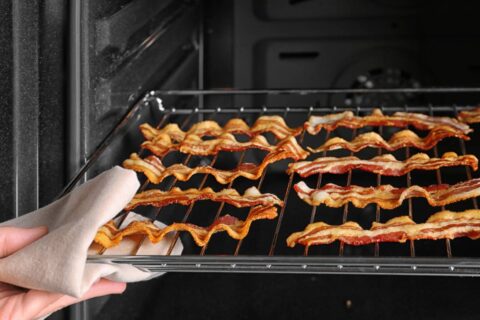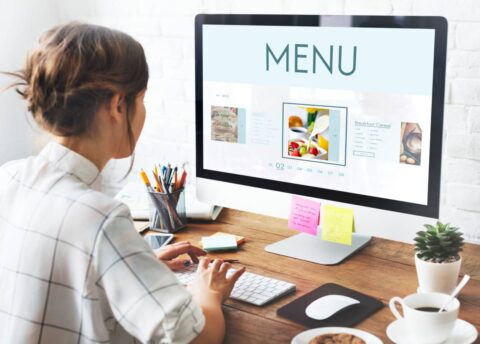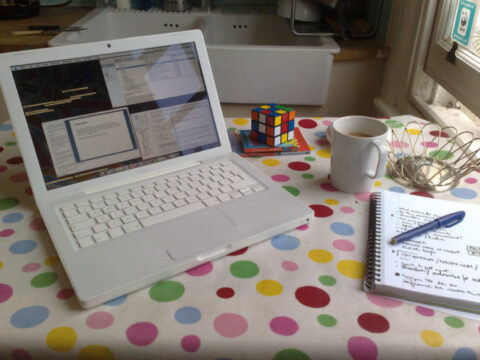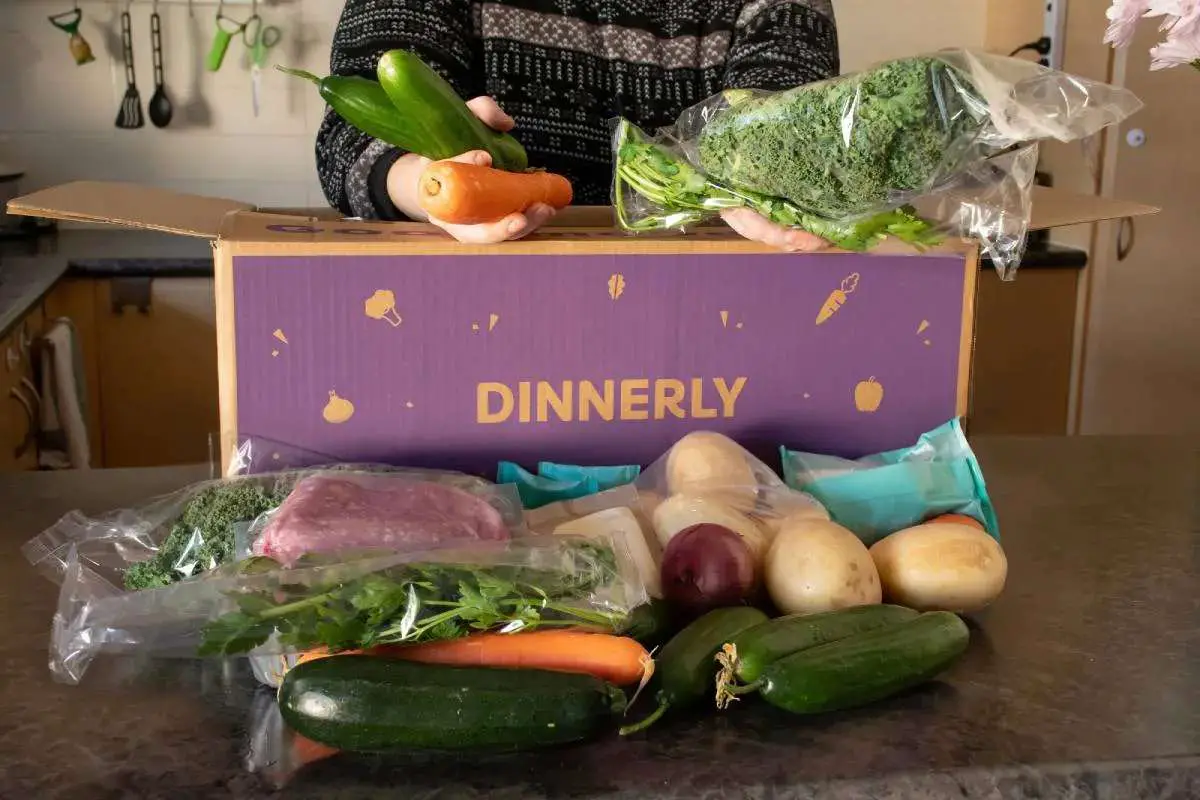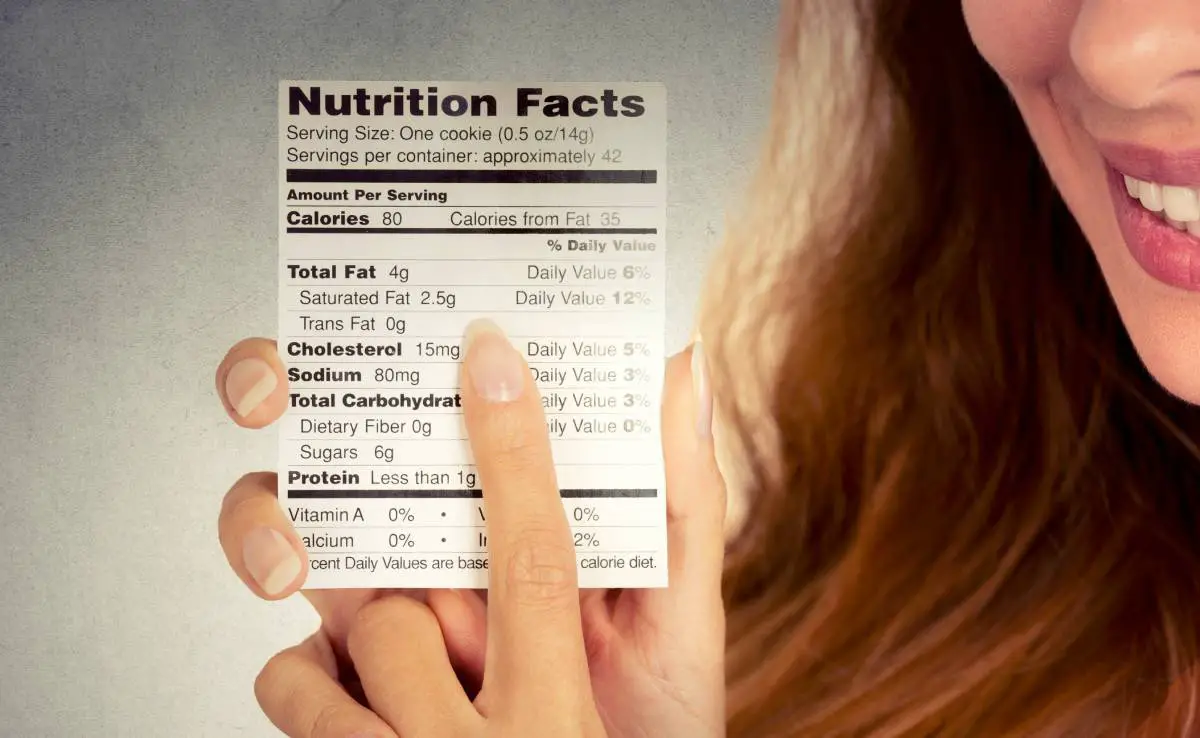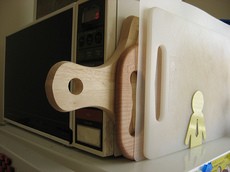 Even if you only cook at home occasionally, having the right cutting board can be crucial. Particularly if you like to cut up fresh vegetables or meat yourself rather than purchasing them pre-cut which can cost more money.
Even if you only cook at home occasionally, having the right cutting board can be crucial. Particularly if you like to cut up fresh vegetables or meat yourself rather than purchasing them pre-cut which can cost more money.
There are different types of cutting boards and some are better than others depending on your needs in the kitchen.
Here, we’ll cover the 4 main types of kitchen cutting boards:
Plastic
Wood
Glass
Corian
…along with the pros and cons of each.
Cutting boards can come in quite handy when preparing to cook a meal, making a snack, or even when you just need a place to put a hot pan to keep it from damaging your kitchen counter!
Most people have more than one cutting board, simply because the more you have, the better prepared you are for any activity in the kitchen (or multiple activities in the kitchen at once!).
Types Of Cutting Boards
Here are some of the different types of kitchen cutting boards and why you may or may not want to choose each one:
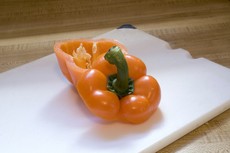 1. A plastic cutting board has the advantage of being relatively inexpensive. In addition, plastic cutting boards come in a variety of shapes, sizes, and colors making it easy to mix and match with your kitchen decor.
1. A plastic cutting board has the advantage of being relatively inexpensive. In addition, plastic cutting boards come in a variety of shapes, sizes, and colors making it easy to mix and match with your kitchen decor.
You may want to use plastic (or synthetic) cutting boards with a different color for different kinds of food. For example:
a red board for raw meat
a yellow one for poultry
a green one for vegetables
Another advantage of choosing a plastic cutting board is that there is less chance of your knife cutting deep grooves into the plastic which would create a place for bacteria to grow and thrive. They are also easier to clean because they will generally fit in your dishwasher. One of my personal favorite uses for my thicker plastic cutting boards is as a hot pad so that I don’t damage my countertop or kitchen table when I need to put a hot pan somewhere other than the stove.
However, plastic cutting boards have their downside as well, one of them being that the thinner ones may not last as long as thicker ones because eventually your knives are going to put grooves in them. This can then make them a breeding ground for bacteria. This is true even if you sanitize them by running them through your dishwasher or adding a little bleach to your dishwater if you wash them by hand.
Pouring bleach (diluted in water) over the board is also a good way of purging the board of bacteria. Once you’ve got the board clean, keep it dry. A few hours of complete dryness will kill the remainder of the bacteria. Make sure you prop up a corner of the cutting board if you’re leaving it on the countertop so moisture won’t be sandwiched under the board.
— Cooking For Engineers
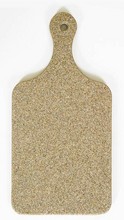 2. A Corian cutting board is a new type of kitchen cutting board created by DuPont. These cutting boards are completely non-porous, so they’re more resistant to bacteria than many other cutting boards and there’s less chance of cross-contamination — say, from meat to vegetables. Plus, a Corian cutting board is very easy to clean. This is a definite plus! They also come in a variety of beautiful colors which, like plastic cutting boards, makes them easy to mix and match with your kitchen decor — if that is important to you.
2. A Corian cutting board is a new type of kitchen cutting board created by DuPont. These cutting boards are completely non-porous, so they’re more resistant to bacteria than many other cutting boards and there’s less chance of cross-contamination — say, from meat to vegetables. Plus, a Corian cutting board is very easy to clean. This is a definite plus! They also come in a variety of beautiful colors which, like plastic cutting boards, makes them easy to mix and match with your kitchen decor — if that is important to you.
But how well does a Corian cutting board hold up?… Well, that’s another story entirely. While their pretty colors, ease of cleaning, and the fact that they are more resistant to bacteria are all great things, a Corian cutting board cannot be used as a hot pad, nor put in direct sunlight — both of which will stain and discolor the cutting board. Also, Corian cutting boards are hard on knives. If you want a kitchen cutting board that is still going to look nice a year from now, this may not be the best choice.
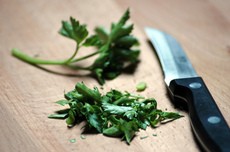 3. The wood cutting board is the old standby, and many people swear by them no matter how many new fangled cutting boards come on the market. Wood cutting boards certainly have the charm of looking beautiful in an old-fashioned, rustic sort of way in the kitchen. And while they are not as easy to clean, many of us don’t mind hand cleaning and sanitizing our wooden cutting boards simply because they do look so nice.
3. The wood cutting board is the old standby, and many people swear by them no matter how many new fangled cutting boards come on the market. Wood cutting boards certainly have the charm of looking beautiful in an old-fashioned, rustic sort of way in the kitchen. And while they are not as easy to clean, many of us don’t mind hand cleaning and sanitizing our wooden cutting boards simply because they do look so nice.
Although some bacteria may survive the cleaning process, wood contains natural substances which kill germs. Bacteria in general do not like wood, so any bacterial contaminant trapped beneath the surface will die quickly.
— WiseGeek
However, regardless of the fact that wood cutting boards have been used for centuries, wooden cutting boards will eventually wear out. They do get grooves in them from the knives you use on them, and this can become a breeding ground for bacteria. Because of this, you should always replace any wood cutting boards that have knife grooves in them to avoid the possibility of cross contamination between foods. Another disadvantage to using a wood cutting board is that they cannot be used as a hot pad for obvious reasons, wood and extreme heat don’t mix unless you want a fire in your kitchen!
 4. A tempered glass cutting board is another popular type of cutting board. Personally, glass cutting boards are my favorite for a number of reasons — the first being that they are so easy to clean. I can simply put them in the dishwasher, and then they are ready to be used again. Also, there is no danger of getting grooves from your knives on a glass cutting board — so there’s no place for bacteria to hide, which I think makes them especially nice. Glass cutting boards come in different colors and designs, which can make them an attractive accessory in your kitchen. Finally, tempered glass cutting boards are resistant to heat, meaning you can use them as a hot pad (my personal favorite). They are quite durable as well; I have dropped mine more than once and never had one shatter.
4. A tempered glass cutting board is another popular type of cutting board. Personally, glass cutting boards are my favorite for a number of reasons — the first being that they are so easy to clean. I can simply put them in the dishwasher, and then they are ready to be used again. Also, there is no danger of getting grooves from your knives on a glass cutting board — so there’s no place for bacteria to hide, which I think makes them especially nice. Glass cutting boards come in different colors and designs, which can make them an attractive accessory in your kitchen. Finally, tempered glass cutting boards are resistant to heat, meaning you can use them as a hot pad (my personal favorite). They are quite durable as well; I have dropped mine more than once and never had one shatter.
Like with any cutting board though, tempered glass cutting boards have their disadvantages as well. For one, they can dull your knives. This can be a big deal if you find yourself constantly resharpening your knives because your cutting board keeps dulling them. Another disadvantage of a glass cutting board is the nasty sound that comes out when the knife meets the tempered glass surface. This can be really aggravating, akin to the sound of fingernails on a blackboard.
My $.02
Choosing cutting boards (after all we need more than one right?) is a very important task for anyone that spends time in the kitchen. Even if you just want to cut up fruits and veggies once in a while to take to work, or to have on hand for snacks, having at least one kitchen cutting board is nice.
My personal suggestion is to have more than one, because they can be used for things other than cutting. For example, I’ve used my glass and plastic ones as decorative serving platters. Trust me, no one will know the difference as long as you use your newer ones for this purpose!
Wood, polyethylene or other soft plastics are the best — and they’re easy to clean, which is key for getting rid of bacteria and other food contaminants. Steer clear of glass or melamine boards, which can actually ruin your knife blades. Cutting boards with silicone treads on the bottom won’t slip while you chop. — Ladies Home Journal
More About Cutting Boards
Reasons To Choose Plastic or Acrylic Cutting Boards
Tips When Choosing A Cutting Board
Cutting Board Size, Surface, Grooves, Feet – What To Look For
How To Choose & Use A Cutting Board
Wood vs Plastic Cutting Boards
Cutting Boards: Thickness, Shape, Cost & More
My favorite things to write about are topics that have to do with pregnancy, weddings, saving money, living green, and life with dogs. When I’m not writing, I love to spend time with my husband, read, create 3D artwork and Native American beadwork.
